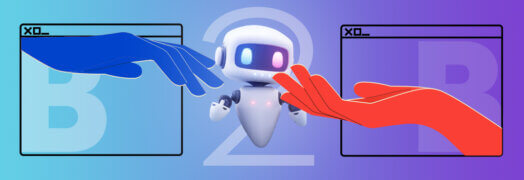Have you noticed how people in our culture have evolved from readers into scanners? People will still sit down to read a good book or magazine for entertainment purposes. But when it comes to business communications, most of us simply don’t have time to read all the details anymore – a fact that has serious implications for today’s marketing communicators.
We’ve evolved from readers into scanners for several reasons. For starters, everyone has more to do and less time to do it in. This is especially true in small businesses where people often hold many different responsibilities. At the same time, we’re all swamped with way more information than we can possibly absorb or even use. Less time and more information means that we need to quickly separate the wheat from the chafe, and scanning enables us to zero in on the information we need in as little time as possible.
In addition, the Internet has trained us to scan. With the ability to instantly click from one web site to another, we no longer have to slog through large amounts of text to see if a web page has the information we want. If it doesn’t, we simply click the mouse and move on to the next one. And finally, social media tools like texting and Twitter have forced us to become adept at communicating in very short, concise information bites.
All of which leads to one of the most important principles for communicating in today’s time-deprived, information-overload world: less is more!
It wasn’t too long ago that long, detailed sales and marketing copy was the preferred approach. Corporate brochures often ran 24 pages and more. But today’s time-deprived readers won’t tolerate lengthy brochures, bloated blogs, and wordy web pages overloaded with text. When a website contains thick blocks of dense text, people will take one look and quickly move on to something less cluttered and easier to read – no matter how worthwhile the message.
“Less is more” doesn’t mean withholding important information in the interest of brevity. You still need to tell prospects and customers what they want to know about your product or service, otherwise you lose their interest and trust. “Less is more” simply means making your point briefly and succinctly while showing your audience that you understand their issues and concerns and offer a cost-effective solution.
What does “less is more” look like?
- Brief brochures and white papers that focus on a few key customer benefits
- Clean, uncluttered web pages that are easy to read and quick to navigate
- Short, concise blogs that don’t ramble on and on
- Webinars and podcasts that focus on a couple of main points rather than trying to cover an entire subject
- Lots of bold headlines and subheads that tell readers what they will find on each page
Most of all, “less is more” means respecting your readers’ time by making it easy to find and digest the information they need as quickly as possible. Whether in a brochure or on a web site, give readers what they want to know and nothing more. Then offer links, contact information, and other options if they want to know more.
In today’s world, lengthy marketing messages tell your target audience that you haven’t got a clue when it comes to communicating effectively. So keep your marketing messages short and to the point, always focusing on your readers’ most pressing concerns. Provide content that adds value rather than only touting your product or service. And always let people know the next step (call to action) in the sales process.



